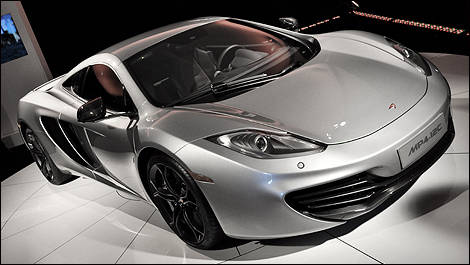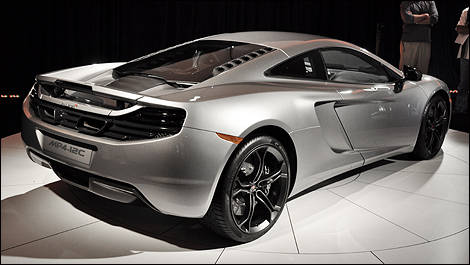TORONTO, On — McLaren’s first road car, the 1993 F1, made one hell of a statement. The world’s first vehicle with a $1 million price tag. A body constructed almost entirely of carbon fibre. Mid-engine mounted 6.0-litre V-12. The fastest top speed of its day (240 mph). Only 100 built. The last one that showed up at auction fetched over $3 million.
McLaren’s upcoming road car, the MP4-12C, will make a different kind of statement — that the British firm, created to succeed on the racetrack, is ready to battle at the “lower” end of the high-performance market, where the $200,000 to $500,000 sports cars come to play. It also signals that McLaren is in this business for the long haul, and that we can look forward to a continuous series of McLaren production cars.
Cabon Fibre MonoCell
At a recent function in Toronto, McLaren showed off its new car to media and prospective customers. North American Sales Manager, Peter Freiberger, noted that the MP4-12C’s carbon fibre “MonoCell” makes it unique among sports cars costing less than half a million dollars.
McLaren pioneered carbon fibre-based racecars and road cars. McLaren built the carbon structure for the previous Mercedes-Benz SLR; a process that Freibeger said took about 400 hours per car.
In contrast, the MP4-12C is built from a newly-developed game-changing “resin transfer” process. To create the MP4-12C tub, two carbon fibre sheets are laid out in a special tool. Then tool is closed and then resin is injected under pressure for 15 minutes. After that the tool is baked for four hours, and then viola! — you have a complete one-piece carbon-fibre tub all ready to go.
Freiberger said the technology is five years ahead of the competition, and allows McLaren to offer this much carbon fibre for such a reasonable price (approximately $250,000 US).
Lots of Aluminum too
Unlike the F1, the MP4-12C only uses carbon-fibre for the MonoCell, which essentially comprises the centre structure of the vehicle. Aluminum substructures are bolted to the MonoCell, both up front and out back. These substructures comprise the vehicle’s crumple zones, and make the MP4-12C a lot easier and less expensive to repair, than a full-on cabon-fibre underbody.
 |
| Photo: Mathieu St-Pierre/Auto123.com |
McLaren’s upcoming road car, the MP4-12C, will make a different kind of statement — that the British firm, created to succeed on the racetrack, is ready to battle at the “lower” end of the high-performance market, where the $200,000 to $500,000 sports cars come to play. It also signals that McLaren is in this business for the long haul, and that we can look forward to a continuous series of McLaren production cars.
Cabon Fibre MonoCell
At a recent function in Toronto, McLaren showed off its new car to media and prospective customers. North American Sales Manager, Peter Freiberger, noted that the MP4-12C’s carbon fibre “MonoCell” makes it unique among sports cars costing less than half a million dollars.
McLaren pioneered carbon fibre-based racecars and road cars. McLaren built the carbon structure for the previous Mercedes-Benz SLR; a process that Freibeger said took about 400 hours per car.
In contrast, the MP4-12C is built from a newly-developed game-changing “resin transfer” process. To create the MP4-12C tub, two carbon fibre sheets are laid out in a special tool. Then tool is closed and then resin is injected under pressure for 15 minutes. After that the tool is baked for four hours, and then viola! — you have a complete one-piece carbon-fibre tub all ready to go.
Freiberger said the technology is five years ahead of the competition, and allows McLaren to offer this much carbon fibre for such a reasonable price (approximately $250,000 US).
Lots of Aluminum too
Unlike the F1, the MP4-12C only uses carbon-fibre for the MonoCell, which essentially comprises the centre structure of the vehicle. Aluminum substructures are bolted to the MonoCell, both up front and out back. These substructures comprise the vehicle’s crumple zones, and make the MP4-12C a lot easier and less expensive to repair, than a full-on cabon-fibre underbody.
 |
| Photo: Mathieu St-Pierre/Auto123.com |

